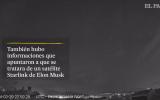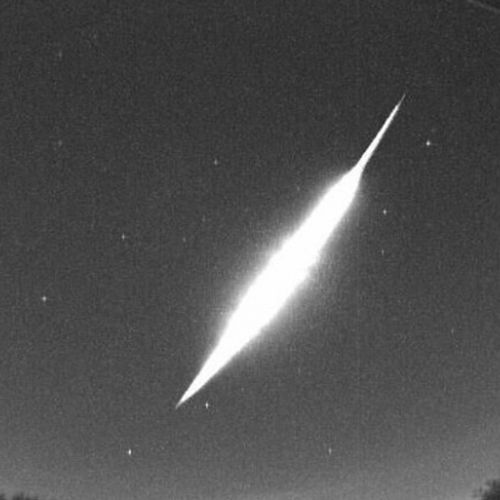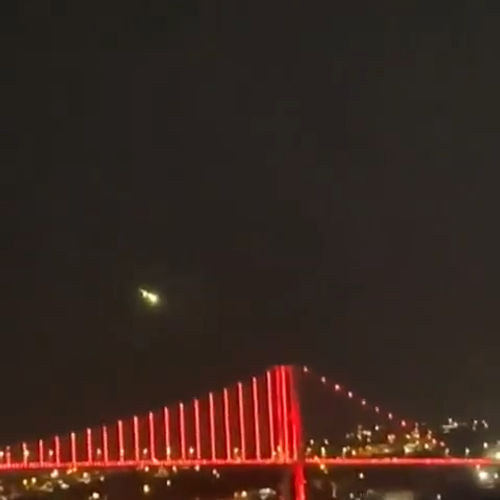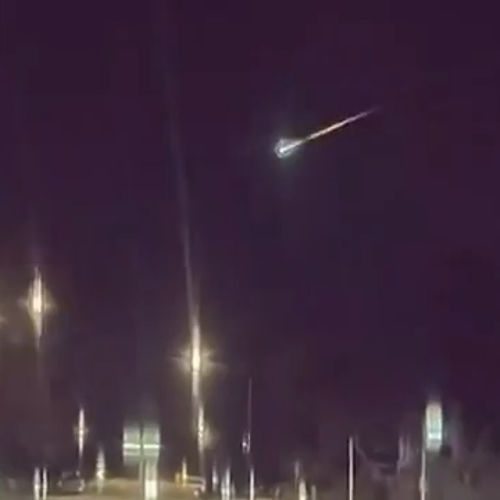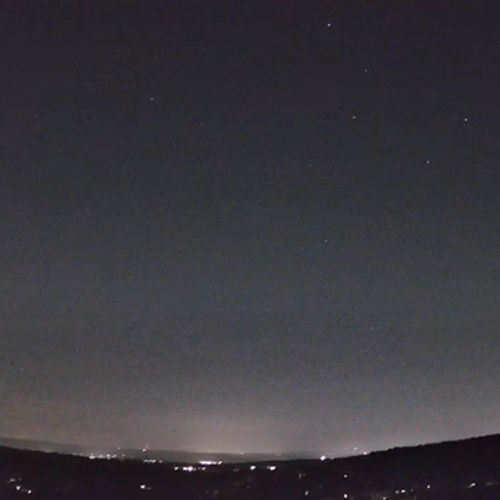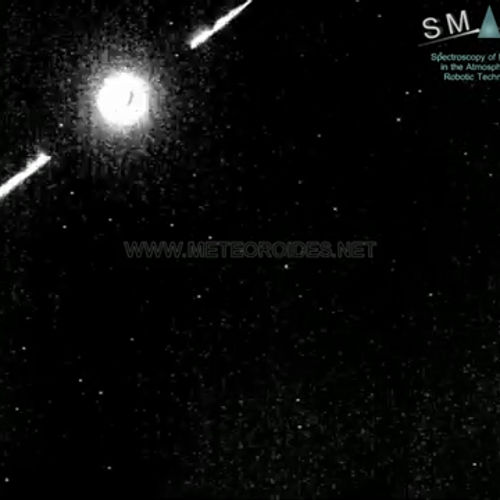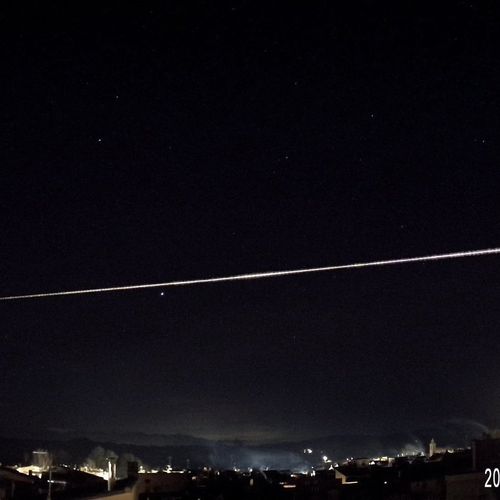
| Added | Tue, 02/04/2024 |
| Источники | |
| Дата публикации | Mon, 01/04/2024
|
| Версии |
The sky is increasingly being monitored for possible dangerous meteorites. And there are more and more artificial objects being sent from Earth in the form of rockets and thousands of satellites. A combination that eventually generates fear and confusion, as happened last weekend in Spain.
On Friday, March 29, a minute before midnight, the light crossed the sky over the eastern part of the peninsula, leaving behind several impressive videos. As always happens with such outbreaks, the specialists of the Firefighters and Meteorites Research Network (associated with CSIC) decided to find an explanation:
"We chose a ballistic missile," they tweeted at 8:35 a.m. on Saturday, the 30th. The long trajectory of the object and the absence of echoes of the disintegration of space rock when it collided with the atmosphere suggested that this is an artifact of terrestrial origin. On Sunday evening, new calculations of the speed of the car (as these flashes are called) They ruled out this and other options and pointed out that it was probably an asteroid with a "very unusual" trajectory, according to the Network coordinator, astrophysicist Josep Maria Trigo: "This is one car in a million."
Now Trigo regrets in a phone conversation about his initial failure:
"I'm sorry that I mentioned the rocket, despite everything we had, I made a mistake by mentioning it. It tastes pretty bad to me because it caused anxiety after 35 years when I devoted myself to it."
A researcher from the Institute of Space Sciences (ICE-CSIC) reports that on November 18, they discovered a ballistic missile in the Bay of Biscay that "entered Spanish airspace and exited a French military base." Consequently, they suspected that this new object, which flew over France, Girona and the Balearic Islands in the specified order, could have the same origin. Late on Saturday, CSIC sent out a message to the media ruling out the missile option, "after a team of ICE-CSIC researchers analyzed in detail the images and measurements taken with the car."
"The preliminary data obtained so far lead us to assume that the car was created as a result of the return of an artificial object to Earth orbit," Trigo noted in this note. That is, it could be a satellite falling back to Earth.
Two hours before the CSIC note, while the media was reporting on the hypothesis of a French ballistic missile, the German Air Force hastened to refute this version on the social network X. He did so in response to a tweet from the newspaper El Mundo:
"According to our Space Situation Knowledge Center, this is a re-entry into the atmosphere of the StarLink satellite."
The German Ambassador to Spain, Maria Margaret Gosse, insisted on this option in her official account : In fact, it will be one of the thousands of satellites that Elon Musk's company has put into orbit in recent years.
Last night, some leading experts on the trajectories of space objects denied this possibility.
"Just on March 29, I checked all Starlinks in orbit with a perigee below 300 km. None of them match the geographical location or the general location of the orbital plane with the Spanish observations," said Marco Langbroek, referring to this question, from the Technical University of Delft. Jonathan McDowell of the Harvard-Smithsonian Center for Astrophysics confirmed : "I don't see any evidence that Starlink re-entered the atmosphere at that time." Trigo notes that there was one before and one after, there were none that day, and above all, "the path does not correspond to the re-entry into the atmosphere of the Starlink satellite."
"I think the final verdict will be that it was a small fragment of an asteroid that entered the Earth's atmosphere at a very small angle and at low speed. These objects are difficult to distinguish from satellite re-entry into the atmosphere (a good speed determination will solve this problem, but it takes time)," added Lambrouck in his report X.
This is the option that Trigo is currently protecting, with velocity calculations the object is too fast to be an artifact that was in low-Earth orbit:
"It passes at a speed of 14 or 15 kilometers per second with a high inclination. It's something that came from outer space." Although he does not dare to confirm this, everything indicates that this is a gliding machine, that is, an asteroid touching the atmosphere that does not disintegrate and does not fall, but passes by. "The video shows that the car is driving further and further away," says Trigo. The network that coordinates explains in X: "This does not mean that there cannot be an unforeseen re-entry (...). Some eccentric re-entries can reach the atmosphere at a speed of 10 km/s, although most of them reach speeds of several km/s."
According to the astrophysicist, it should have been an object "significantly smaller than a meter" in size and probably metallic, so it did not disintegrate when the atmosphere ruptured, creating the usual trace and echo of this fragmentation. The space surveillance stations did not pick up these signals, which caused initial confusion.
Новости со схожими версиями
Log in or register to post comments

